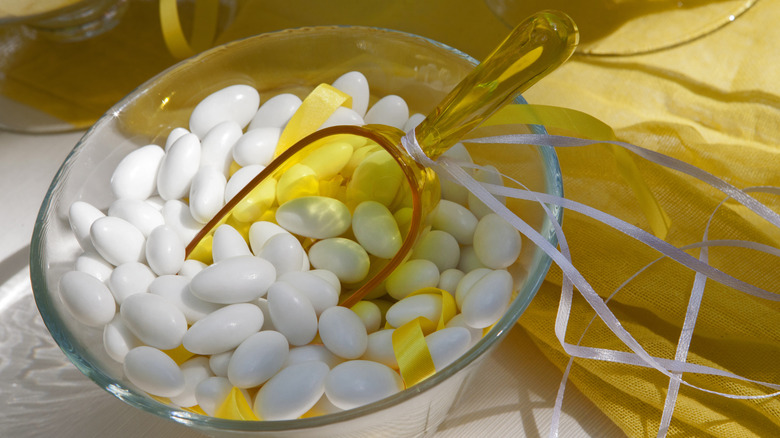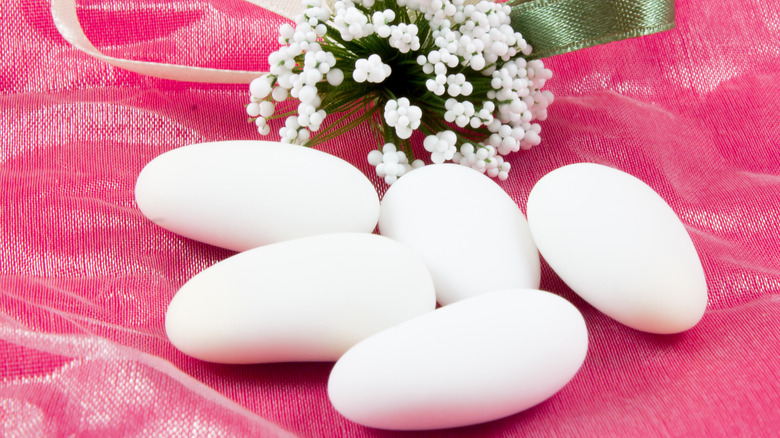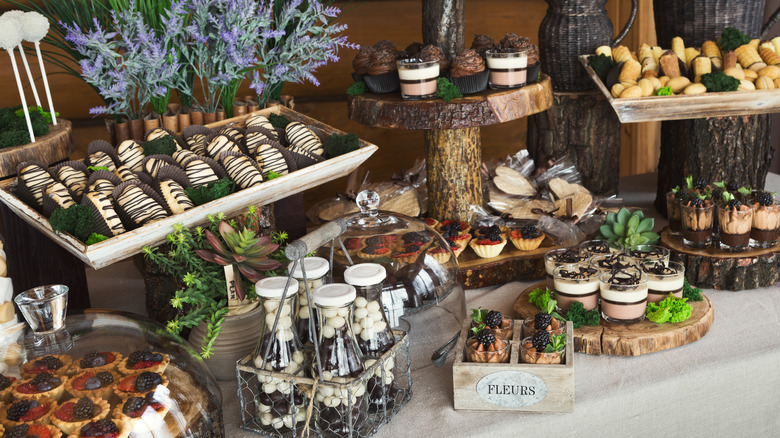Here's Why Jordan Almonds Hold Significant Meaning At Weddings
Jordan almonds aren't one of the most common candies in the world, but one place you're likely to find plenty of these candy-coated delights is at a wedding. That's because Jordan almonds have had a significant meaning at weddings for centuries.
Jordan Almonds are a simple candy consisting of whole almonds in a candy-coated shell. They can be found in various colors, but at weddings, they are most often white. They also go by many names, such as "confetti" in Italy or "koufeta" in Greece.
Much of the candy's symbolism is captured in a poem attributed to Jill Girardo that typically accompanies the wedding favors. "Five sugared almonds for each guest to eat. To remind us that life is both bitter and sweet. Five wishes for the new husband and wife — Health, wealth, happiness, children, and a long life!"
While they can sometimes be found at a wedding dessert table, it's also believed that they should only be given out as edible wedding favors in counts of five to represent these five wishes, or three because it is indivisible by two — meaning that the couple can't be divided either. It's also believed that the egg-like shape of the almond is meant to symbolize fertility as a sign the couple will have many children.
While Jordan Almond's candy coating is relatively modern, its presence at weddings is as old as the wedding cake.
History of Jordan Almonds
The first form of Jordan Almonds can be traced back to the year 177 B.C. Almonds coated in honey were common at weddings and other special occasions. It's believed that the combination of the bitter nut and the sweet honey was meant to symbolize the bittersweet nature of life's many ups and downs.
The candy would remain a popular staple at European weddings well into the Middle Ages and Renaissance. When sugarcane became a more common fixture at European courts in the 17th and 18th centuries, honey was replaced by the candy coating that remains today.
While the treat has many names in different countries, the origin of the name Jordan Almonds isn't well-documented. Some believe it was derived from the French word "jardin," meaning garden. While other historians believe that it is related to a type of almond that once grew along the Jordan River.
No matter where this sweet treat takes its name from, it should certainly have a place at any traditional wedding ceremony.
Ways to incorporate Jordan Almonds into your wedding
The simplest way to incorporate Jordan Almonds into your wedding is to use them as a part of a dessert table. This gives everyone the opportunity to indulge in the candied nut whether they know the significance or not. It might also be helpful to make them feel less obligatory since that candy shell is pretty tough and might not be appreciated by those with fragile teeth.
They also make great favors to set at table placements or in guest rooms. The almonds are typically wrapped in delicate tulle sachets; just be sure to distribute them in groups of three or five.
If you want to include the tradition without the candy itself, you can also swap them out for another delicious treat — almond is a great flavor to incorporate into a wedding cake. You can also swap them out as favors with a set of almond-flavored macarons. This way, you can have your cake — or almond — and eat it too.


